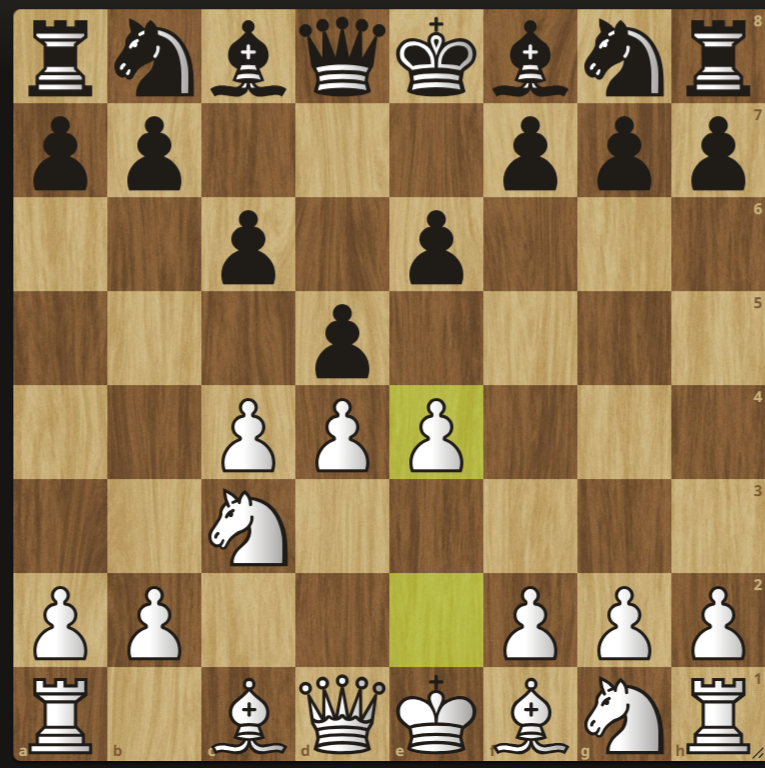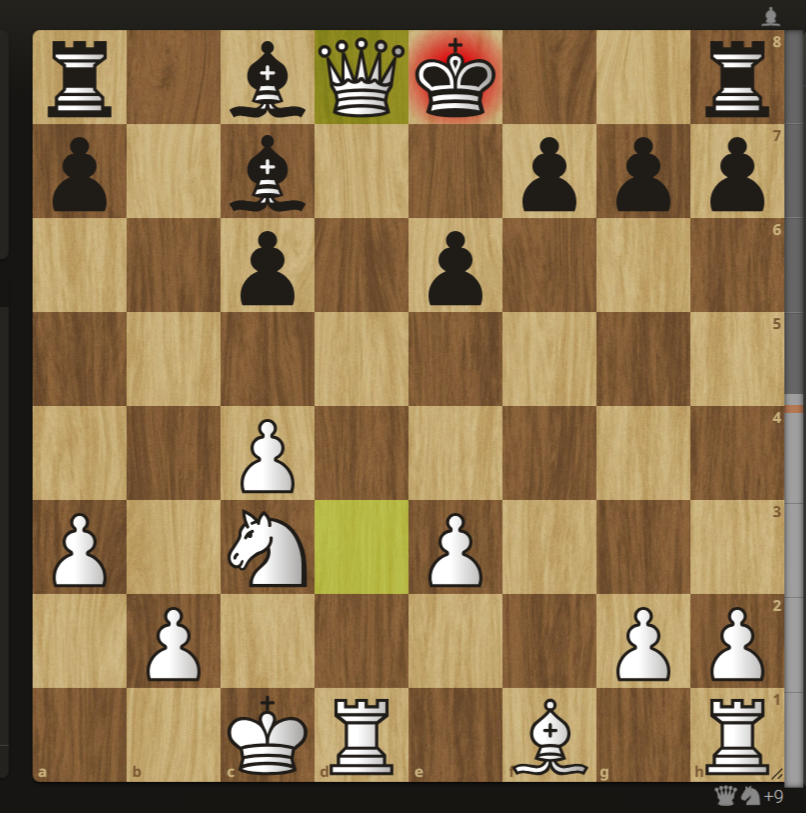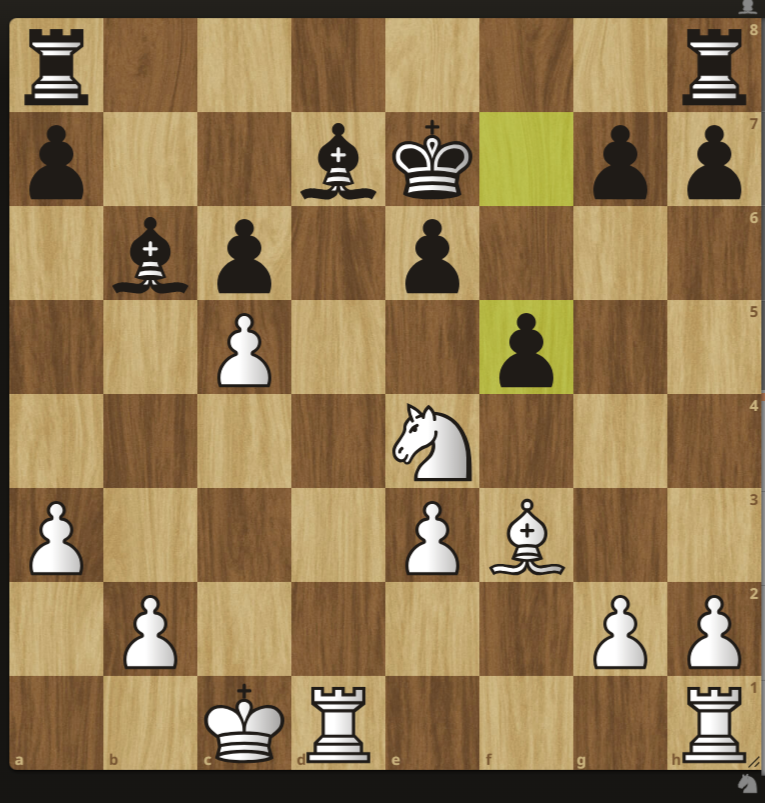
Hello chess players,
Welcome to another HiveChess lecture, where we will explore a new topic: Keep it Simple. In my last HiveChess Lecture, I spoke about Controlling the Center vs Attacking the Center, and like I promised, I will be doing more of these HiveChess lectures.
You know how chess can get so complicated and even annoying, especially when you do not know what to play, or worse, when you lose. Things like this could spring up from not keeping it simple; constantly running into complications can make it hard to find the best move. It is something like when you have been defending a position for a long time, probably because of an early blunder or a messed-up move order. At some point, it is quite expected for you to crack. You cannot hold for a long time.
It is understandable to want to make an outrageous sacrifice move on the chess board, when everyone is watching, so they can be starstruck by such a level of brilliance, but it is also worthy to note that there are given positions where the simplest form of move is the best because it keeps things under control and minimizes the risk of losing. Keeping it simple is more of a strategy than a tactic because tactics is more of knowing what to do when there is something to do, while strategy is more of knowing what to do when there is nothing to do.
Here are some benefits of keeping it simple, I would like you to know before we look at a game that talks about simplicity.
-
More work for the opponent: One thing I can say for fact is that simplicity moves the pressure away from you and places it on your opponent. Make your opponent do the hard thinking, let them find the best defensive move when their position is cramped or in shambles.
-
Less Mistakes: When you keep the game as simple as possible for yourself, even down to playing openings that you understand the key ideas, it can go a long way in helping you avoid mistakes. I remember once asking a friend of mine why he loves to play d4 so much, and he told me it is because most times he knows what to expect from his opponent compared to when he plays e4.
-
In classical games, it saves time: Over time, I have benefited from this, especially when playing physical chess tournaments. It helps to prevent the long process of coming up with what to do and what to play, especially when you are playing a time control that is quite long.
Now, let's look at a game where simplicity was used. It is considered one of the best games where simplicity was employed. It is game 5 from the 2014 World Chess Championship between Magnus Carlsen and Viswanathan Anand, where Carlsen plays nothing but simple chess. Nothing spectacular from the beginning to the middle of the game, but something simple in the endgame.
2014 World Chess Championship
Magnus Carlsen vs Viswanathan Anand
c4 e6 2. d4 d5 3. Nc3 c6 4. e4

The semi-slav is what this opening is called. From here, it is quite simple in the sense that white is going for a break in the center in order to create more space for its other pieces at the back, the bishop on f1 and c1. This is one of the simple moves I always advise beginners to employ in their games, especially at the beginning. Look for fast ways to develop your pieces.
5. Nxe4 Bb4+ 6. Nc3 c5 7. a3 Ba5 8. Nf3 Nf6 9. Be3 Nc6 10. Qd3 cxd4 11. Nxd4 Ng4 12. O-O-O Nxe3 13. fxe3 Bc7 14. Nxc6 bxc6 15. Qxd8+ Bxd8

On move 15, white goes for the trade of the queens, simply because he sees he is ahead in development, and after the trade of the queen, white will be controlling the open file with his rook on d1.

This is where things got interesting in the position. Counterattack on both their pieces, the knight is under attack as well as the bishop on b6. But after capturing the pieces, white tends to be in a better position due to the outpost pawn he gets on the g-file.

The game went on for a couple of moves until Magnus gained the advantage on move 51 when Anand made of king blunder by moving to e6. This shows how far patience is required when playing simple chess, especially in classical. Sometimes, the good move or the blunder from your opponent that wins you the game might take a long time before it comes, but keeping it simple can give you the strength to spot the blunder when it finally happens.
Here is a link to the game if you want to watch the entire game:
Game Link
And here is the PGN:
[Event "WCh 2013"]
[Site "Chennai IND"]
[Date "2013.11.15"]
[Round "5"]
[White "Carlsen, M."]
[Black "Anand, V."]
[Result "1-0"]
[ECO "D31"]
[WhiteElo "2870"]
[BlackElo "2775"]
[PlyCount "115"]
[EventDate "2013.11.09"]
1. c4 e6 2. d4 d5 3. Nc3 c6 4. e4 dxe4 5. Nxe4 Bb4+ 6. Nc3 c5 7. a3 Ba5 8. Nf3 Nf6 9. Be3 Nc6 10. Qd3 cxd4 11. Nxd4 Ng4 12. O-O-O Nxe3 13. fxe3 Bc7 14. Nxc6 bxc6 15. Qxd8+ Bxd8 16. Be2 Ke7 17. Bf3 Bd7 18. Ne4 Bb6 19. c5 f5 20. cxb6 fxe4 21. b7 Rab8 22. Bxe4 Rxb7 23. Rhf1 Rb5 24. Rf4 g5 25. Rf3 h5 26. Rdf1 Be8 27. Bc2 Rc5 28. Rf6 h4 29. e4 a5 30. Kd2 Rb5 31. b3 Bh5 32. Kc3 Rc5+ 33. Kb2 Rd8 34. R1f2 Rd4 35. Rh6 Bd1 36. Bb1 Rb5 37. Kc3 c5 38. Rb2 e5 39. Rg6 a4 40. Rxg5 Rxb3+ 41. Rxb3 Bxb3 42. Rxe5+ Kd6 43. Rh5 Rd1 44. e5+ Kd5 45. Bh7 Rc1+ 46. Kb2 Rg1 47. Bg8+ Kc6 48. Rh6+ Kd7 49. Bxb3 axb3 50. Kxb3 Rxg2 51. Rxh4 Ke6 52. a4 Kxe5 53. a5 Kd6 54. Rh7 Kd5 55. a6 c4+ 56. Kc3 Ra2 57. a7 Kc5 58. h4 1-0
Until next class.

♟♟♟♟♟♟♟♟♟

Posted Using INLEO